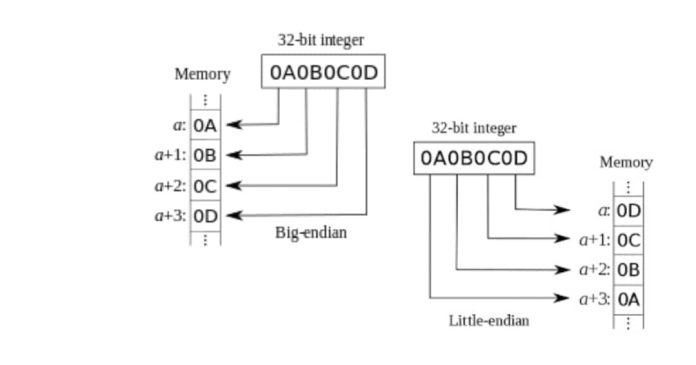Endianness refers to the byte order used to represent multi-byte data types (e.g., integers, floating-point numbers) in computer memory. It determines how the bytes of a data type are stored in memory, affecting data transfer and interpretation across different systems.
Big-Endian:
– In Big-Endian, the most significant byte (MSB) is stored at the smallest memory address, and the least significant byte (LSB) is stored at the highest.
– For example, the 32-bit integer 0x12345678 is stored as 12 34 56 78 in memory.
Little-Endian:
– In Little-Endian, the least significant byte (LSB) is stored at the smallest memory address, and the most significant byte (MSB) is stored at the highest.
– The same integer 0x12345678 would be stored as 78 56 34 12 in memory.
Key Differences:
– Big-Endian is used by many network protocols and some older systems.
– Little-Endian is used by most modern PCs, including those with Intel processors.
Endianness is crucial in networking, data transfer, and cross-platform compatibility


